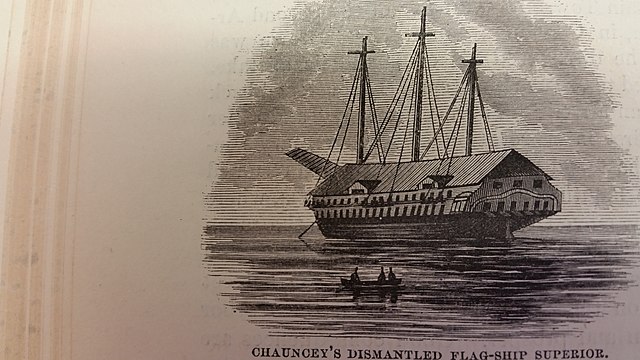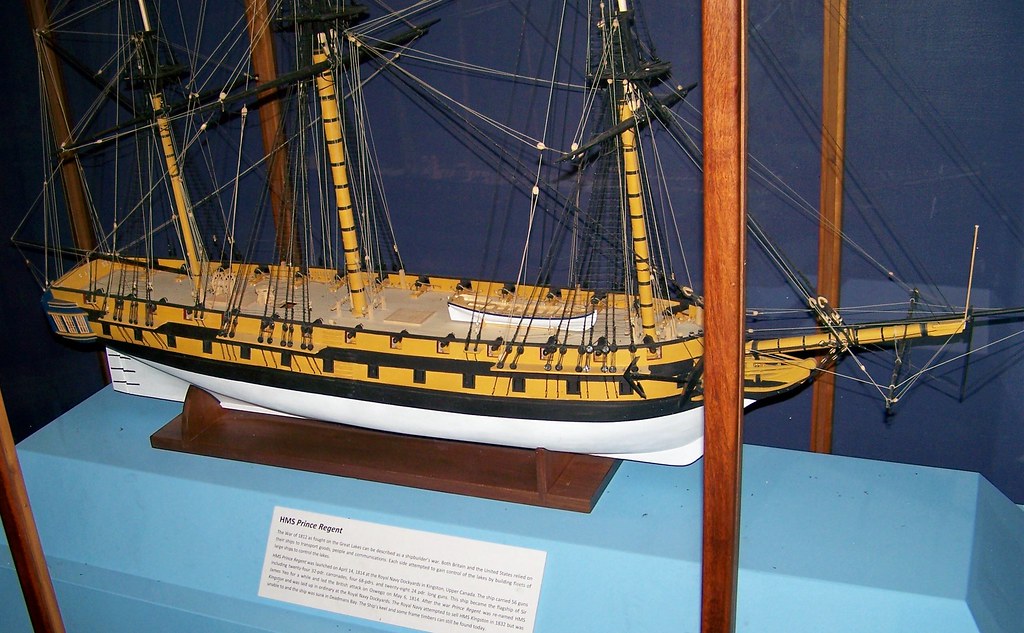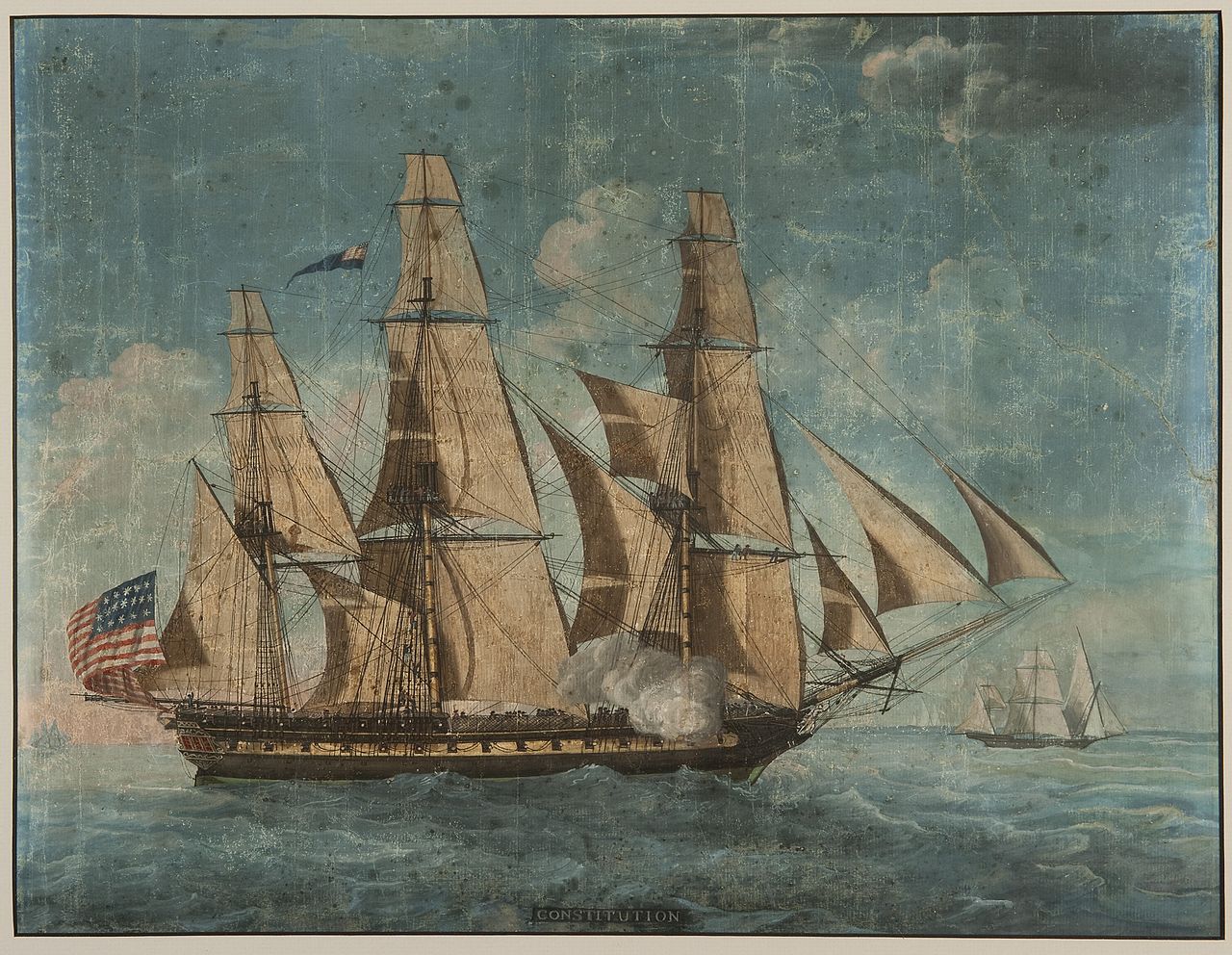-
Posts
2,801 -
Joined
-
Last visited
-
Days Won
11
Content Type
Profiles
Forums
Blogs
Gallery
Downloads
Events
Posts posted by akd
-
-
It is only the immortal (i.e. not permanent) exceptional upgrades that are an issue. If I spend an hour+ to go to a wreck, and I get a random permanent mod, it had better be exceptional.To preface this post, I really like the shipwreck feature.
I think that the upgrades you get from the wrecks are too good. I do not think that you should ALWAYS get an exceptional upgrade from every wreck you find. I scavenged an Exceptional Powder Monkeys off of a trader's cutter, which is just absurd to me. Exceptional upgrades are meant to be rare - something to work for and extremely valuable and the current system makes all other upgrades Basic to Mastercraft irrelevant.
So my proposal is pretty simple (numbers can be tuned):
10% chance of Exceptional
15% chance of Mastercraft
75% chance of Fine
You are always guaranteed at least a Fine upgrade, however it is still possible to get lucky and get an Exceptional version. This allows people with 50 crafting to still be able to make some money off of upgrades, and provides a way for people lucky enough to get a bottle a chance of finding some good modules.
Reducing how frequently exceptional modules enter the game allow devs to increase the quantity of bottle drops. Now not every wreck you go to will have an exceptional upgrade, but you get more bottles to find more wrecks.
But then, immortal mods are somewhat of a questionable design decision anyways.
-
Those were plans for the class of frigates. It does seem that Constitution was built with quarterdeck bulwarks, although her exact appearance on the day she launched is conjecture.
Whilethe designer's original draught still exists, there is much additional documentary evidence thatmakes it clear that the builders did not follow the plans with exactitude. The earliest known artist'srendering was done about 1803 by Michel Felice Cornè; the earliest model dates from 1812. But ifwe cannot see her directly, we can construct a reasonably good image of her first appearance byextrapolation from the draught, from diary and journal entries, and from newspaper articles of theperiod.Constitution's hull originally bore a broad yellow ocher band from the vicinity of the hawse pipes tothe quarter galleries, the outer surfaces of the gun port lids beingthe same color. This band extended approximately from the level of the channels down to the top of the main wales. Below, inthe "bends," the ship was tarred; above it, including the quarterdeck bulwarks, she was paintedblack. Whether or not there was decorative painting other than this on her sides is unknown, butCornè shows a yellow ocher "pin stripe" on the moldings at the spar deck sill level. -
Nice illustration of Constitution as launched in 1797:

-
Prince references to the Prince de Neufchatel 1813, an 18-gun Schooner (US, not british):
http://threedecks.org/index.php?display_type=show_ship&id=23487
Yes!
http://forum.game-labs.net/index.php?/topic/2498-player-selected-ship-2015-suggestions/?p=52215
-
 1
1
-
-
Your 1803 armament is incorrect, as math would indicate. Also, 1805 is the correct year of her re-classing and armament to 100 guns.
1805 - 100 guns
Lower Gun Deck - 30x Spanish 36-Pounder
Upper Gun Deck - 32x Spanish 18-Pounder
Spardeck- 32x Spanish 8-Pounder
Roundhouse - 6x Spanish 18-Pound Carronades
Obviously plans posted under her name appear to be for her as an 80-gun ship. The second unidentified plan is Rayo with spar deck and more guns added.
Forum search shows both have been posted here already:
http://forum.game-labs.net/index.php?/topic/2425-ship-request-2nd-rate/?p=92097

-
 1
1
-
-
USS President in the harbor of Toulon, 1803:
https://www.1000museums.com/art_works/antoine-roux-the-u-s-frigate-president-in-the-harbor-of-toulon
And her sister United States, also by A. RouxSure this is not also President? All references I can find (not many) indicate such.
-
Could shallow water ships like this have serve in the shallow water areas of naval action? Therefore should they be allowed to be built there and not travel outside of shallow areas unless they want to run out of supply??
Prince Regent laden draught is basically the same as a 64-gun 3rd rate, so that would make very little sense. Certainly provision and repair capacity would need to be greatly reduced.
Personally, I'd like to see a two-faction Great Lakes map to play on with current population.

-
 2
2
-
-
Her potential opponents (seeking plans)
USS Superior (1814), 58 guns

Length of Gundeck - 180'
Breadth - ?
Depth in Hold - ?
Burthen - 1580 Tons BM
Spar Deck - 26x 42pdr carronades + 2x 24pdr guns
Upper Deck - 30x 32pdr columbiads (short 32s)
Crew - 500
USS Mohawk (1814), 42 guns
Length of Gundeck - 155'
Breadth - 37' 6"
Depth in Hold - 15' 6"
Burthen - 1350 Tons BM
Spar Deck - 16x 32pdr carronades
Upper Deck - 26x 24pdr guns
Crew - 350
-
 1
1
-
-
HMS Prince Regent (1814), 56 guns.
HMS Prince Regent was the largest British ship to see action on the Great Lakes in the War of 1812. Built at Kingston, Ontario in response to the advent of American super-frigates and the arms race to maximize firepower relative to size in ships built to operate on the Lakes, the Prince Regent packed a big punch into a unique hull. She was variously referred to as a frigate and a two-decker SoL.


http://collections.rmg.co.uk/collections/objects/66642.html#k3RsgjfGHcTwtqGG.97

Length of Gundeck - 155' 10"
Breadth - 43' 1"
Depth in Hold - 9' 2"
Burthen - 1,293 50⁄94 Tons BM
Spar Deck - 20-24x 32pdr carronades + 4-8x 68pdr carronades (28x total)
Upper Deck - 28-30x 24pdr guns
Crew - variously reported as 280 and 550
To the casual observer there would have been little to distinguish these ships from the seagoing frigates of the Royal Navy. They were in fact of heavier construction than had been the norm, with thicker timbers and closer-fitting frames, the British having learnt the lesson of earlier frigate actions in the Atlantic where heavier-built American vessels had withstood shot better than their British opponents. The most striking difference lay below the waterline; because the lake ships had no need to carry large quantities of drinking water - and thus had no need for a capacious hold - they could be sharper in profile, with a steeper frame 'deadrise'. This feature and a shallower draft made them fast and weatherly, and without the weight of water more guns could be carried. Other features reflected the expediency of construction. There had been no time to season the oak properly, so the wood was green, more vulnerable to rot. Shorter lengths of timber were used than was normally the case, scarfed and bolted together, and there had been no compass timbers or 'grown knees' from which curved elements were normally cut. Nevertheless, with a crew of 550, and armed with thirty twenty-four pounders and twenty-eight carronades - twenty of them 32 pounders and eight massive 68 pounders – she was well up to the task at hand, and with these two ships and several large brigs Sir Thomas Yeo had a frigate squadron as formidable as any that were ranging the high seas in the final years of the Napoleonic Wars. An 1817 aquatint of the British squadron at anchor off Oswego on 6 May 1814, based on a drawing by a Royal Marines officer present at the action, Captain William Steele. The frigate to the right, flying the broad pennant of Commodore Sir James Yeo, is HMS Prince Regent, flagship of the squadron. The boats being rowed ashore are taking Royal Marines, sailors and soldiers to the assault of the fort atop the distinctive jutting promontory, visible amidst the smoke from the bombardment (National Archives of Canada).
An 1817 aquatint of the British squadron at anchor off Oswego on 6 May 1814, based on a drawing by a Royal Marines officer present at the action, Captain William Steele. The frigate to the right, flying the broad pennant of Commodore Sir James Yeo, is HMS Prince Regent, flagship of the squadron. The boats being rowed ashore are taking Royal Marines, sailors and soldiers to the assault of the fort atop the distinctive jutting promontory, visible amidst the smoke from the bombardment (National Archives of Canada). Another 1815 aquatint of the Battle of Oswego based on a drawing by Royal Marines officer present at the action - in this case Lieutenant John Hewett, who climbed the flagpole of the fort and took down the Stars and Stripes. In the foreground HMS Prince Regent flies the broad pennant of Sir James Yeo; beyond that the British forces are landing and forming up to attack the Americans, who are on the lower slope opposite with the fort behind them. The entrance to the Oswego river, which allowed the Americans to bring up supplies and armaments from New York, is to the right (National Archives of Canada).
Another 1815 aquatint of the Battle of Oswego based on a drawing by Royal Marines officer present at the action - in this case Lieutenant John Hewett, who climbed the flagpole of the fort and took down the Stars and Stripes. In the foreground HMS Prince Regent flies the broad pennant of Sir James Yeo; beyond that the British forces are landing and forming up to attack the Americans, who are on the lower slope opposite with the fort behind them. The entrance to the Oswego river, which allowed the Americans to bring up supplies and armaments from New York, is to the right (National Archives of Canada).-
 9
9
-
-
If World War Z (the book, Battle of Yonkers story) taught me anything, it's that explosive ordinance does more damage by force than by penetration. I could easily see doctors of the time assuming all the dead and injured was caused by caused by contact with flying objects, and not "just" the shock waves caused by impact.
There were no lethal / damaging "shock waves" from impact of solid shot. Even in explosive ordnance, the lethal area for blast is minuscule in comparison to the lethal area for shrapnel. Of course, chance of death may be 100% in that small area, but most wounds are from shrapnel, not blast, due to the much larger area of effect. Exception is probably IEDs due to their unique employment.
-
They were referred to as frigates, but regardless, unarguably a 5th rate, and 200 less tons burthen than L'Hébé.
At the time of her meeting with L'Hébé, HMS Rainbow carried:
20x 68pdr carronade
22x 42pdr carronade
6x 32pdr carronade
-
The circumstances of her capture are interesting: taken by a very old (1745) 44-gun frigate rearmed entirely with carronades. The French captain either genuinely mistook the smaller two-deck frigate for an SoL or used that as a convenient excuse to strike after firing a single broadside.
-
-
Much simpler, less prone to abuse and more fun if players are simply allowed to escort their own trader fleet in a warship. It is stupid to force AI into sheepdog role and make players play as sheep.
Rules:
-must use own max crew to crew all vessels in fleet (so if you want multiple Indiamen in your trader fleet, you'll have to escort in a frigate, even if at max rank)
-max 2-3 AI traders
-
 2
2
-
-
Safe players are bad. Safe areas are good.
-
 2
2
-
-
That assumes sufficient boats for all the crew, which was unlikely, especially in an emergency / combat situation (imagine the preparation and planning it would take to orderly load entire crew of a lineship into boats even if there was sufficient space). Voluntary sinking would almost certainly be death for some of the crew, which can be accommodated in game by chance of crew / officer loss less than blowing up but greater than surrendering afloat.
There is nothing realistic about "scuttling" without loss in the Age of Sail.
-
May be an idea make sure the Xebec is not craftable and that it is rare and 1 dura? Otherwise like the renomee and rattle it may be all we see in the open world.
Lateen sails should have some special disadvantages when tacking.
-
 1
1
-
-
We are now worried about wind strength after changing/improving damage model penetration improvements. There is a pretty good chance that someone might not like changes to what they like currently and it can affect reviews and sales. We only plant to improve (fix bugs) in accel/decel and code in lateen sails for xebecs starting from La Requinn and thats it. Wind strength changes can wait or might never get in.
A combination of variable wind strength and shallows in battles could create a very interesting (and historic) balancing dynamic:
Light Winds - Small ships have peak performance. Medium and Large can't reach peak performance. Small ships can outmaneuver medium and large ships, and combined with shallows could gain very significant maneuver advantages.
Moderate Winds - Medium ships (frigates) have peak performance. However, combination of shallows and better maneuverability still provides options and advantages to small ships, while Large ships have their current speed disadvantages relative to medium ships.
High Winds - Large ships (SoLs) have peak performance, but trade this for not being able to open lowest deck ports on lee (downwind) side when not sailing before or just off the wind. Large ships (SoLs) can more easily catch Medium and Small ships, but closed leeside lowest deck gunports and superior maneuverability of small / medium ships provides a balance against their firepower.
The speed differences between wind states should not be huge.
-
 7
7
-
-
Also on the pacific side. If it is pve only on the Same server as pvp won't that just encourage all traders to work over in the pve area?
As I mentioned, simply cutoff transfer of goods and ships from Pacific to Atlantic. Captains must cross Isthmus on foot and take with them only their accrued experience. Non-transfer of gold, mods and officers might need to be considered.
-
The only value I can see for Pacific is to make it a PvE-only area (pacific, how appropriate) with no transfer of ships or goods across the Isthmus, just captains. Then merge all servers.
-
 2
2
-
-
Nice road map. Will land in port battles include shallows in battles? This seems to be a key missing factor to make battles more interesting and dynamic.
???Potential raking improvements
Please don't add automatic raking.
-
 2
2
-
-
Clever tool to go afk without being ganked
Logout.
-
If I'm not mistaken, weren't these the vessels that were known for being a bit "tippy"?
According to Robert Gardiner, there was no particular design fault, but it seems these vessels may been too small for their far-ranging assignments.
-
 1
1
-
-
I had planned to make a thread on brig sloops / gun-brigs this week. Thanks for getting this going.
Archer-class would also be an excellent candidate for conversion to a light mortar brig, e.g.
On completion, HMS Desperate was a vessel of 177 tons. She was 80ft long on her main deck and 22'6" wide across the beam. She was armed with 10 18pdr carronades on her broadside and two 9pdr long guns in her bow. She was manned by a crew of 50 officers, men and boys. She was the first vessel in the Royal Navy to bear the name....In 1811, HMS Desperate was converted into a Mortar-Brig. This entailed the removal of her bow 9pdr guns and their replacement with a 12" mortar. The beams under her forward main deck were reinforced to allow the massive recoil from the mortar to be safely absorbed.http://www.kenthistoryforum.co.uk/index.php?topic=17028.0
Conquest-class is a gun-brig of interesting design and armament.


Hull length: 75ft
Hull beam: 21ft
Hull displacement: 149 tons
Armament:
2 x 24pdr (short Gover) bow chasers
10 x 18pdr carronades / 4pdr guns
2 x 18pdr carronade / 4pdr gun stern chasersCrew: 50
Particularly interesting is the half-deck at the bow to carry the 24pdr chasers.
http://www.promare.co.uk/ships/Wrecks/Wk_Fearless.html
Cherokee is another prolific class of brig sloops.



http://www.kenthistoryforum.co.uk/index.php?topic=16647.0

https://en.wikipedia.org/wiki/Cherokee-class_brig-sloop
A number of these were converted into exploration vessels, including HMS Beagle.
-
 1
1
-




50-Gun Ships Collection (With Plans)
in Ships of the line
Posted
Jupiter (1813), a late British 50-gun ship, perhaps one of the last built. Built to the lines of the captured Danish 2nd Rate Christian VII (not the 1767 one in player poll, but subsequent 1803 one).